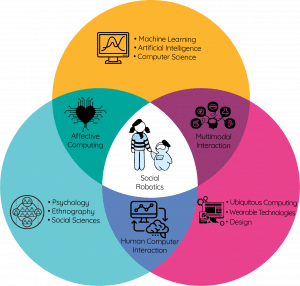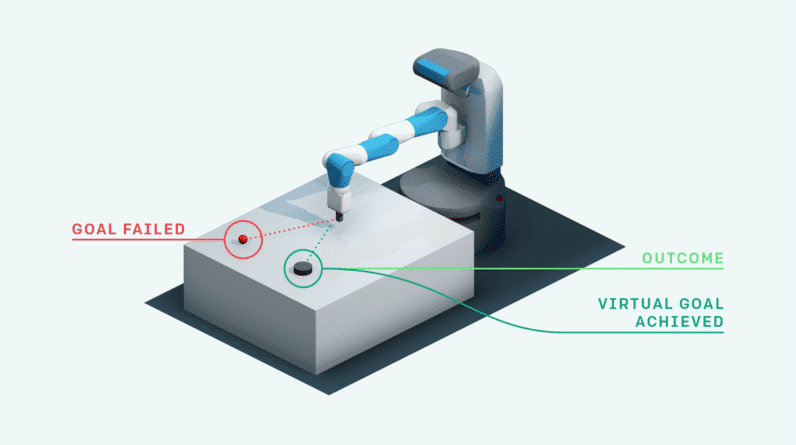In the world of technology, the integration of AI and virtual reality has opened up a whole new realm of possibilities. By combining the power of artificial intelligence with the immersive nature of virtual reality, developers are now able to create breathtaking experiences that blur the lines between the virtual and real world. From interactive gaming to realistic simulations, AI-powered virtual reality is revolutionizing the way we interact with technology, offering us a glimpse into a future that once seemed only possible in science fiction.

Understanding AI and Virtual Reality
What is AI?
Artificial Intelligence (AI) refers to the development of computer systems that can perform tasks that normally require human intelligence. These systems are designed to analyze data, make decisions, and learn from experience. AI encompasses a range of technologies, including machine learning, natural language processing, computer vision, and robotics.
What is Virtual Reality?
Virtual Reality (VR) is a technology that immerses users in a computer-generated environment, simulating a realistic experience. By wearing a VR headset and utilizing motion-tracking devices, users can interact with and explore virtual worlds. VR creates a sense of presence and immersion, making users feel as if they are physically present in another reality.
The Intersection of AI and Virtual Reality
The convergence of AI and VR has opened up new possibilities for creating immersive experiences. AI technologies can enhance and enrich virtual reality by enabling realistic simulations, intelligent characters, and personalized interactions. By combining AI with VR, developers can create more engaging and interactive virtual worlds that adapt to individual users’ preferences and behaviors.
The Benefits of AI in Virtual Reality
Enhanced User Experience
AI enhances the user experience in virtual reality by providing intelligent and adaptive interactions. Through machine learning algorithms, virtual characters can learn and respond to user behavior, creating a more personalized and engaging experience. AI can analyze user preferences and adapt the virtual environment accordingly, making the experience more immersive and enjoyable.
Realistic and Immersive Environments
AI-powered algorithms can generate realistic and immersive virtual environments. Through computer vision techniques, AI can accurately simulate physical objects, landscapes, and even weather conditions in virtual reality. This realism enhances the sense of presence, making users feel as if they are truly immersed in a different world.
Intelligent NPCs and Characters
AI enables the creation of intelligent Non-Playable Characters (NPCs) and characters in virtual reality. These virtual beings can interact with users in a lifelike manner, responding to their actions and displaying realistic behaviors. AI-powered NPCs can enhance storytelling in virtual reality experiences, adding depth and authenticity to the narratives.
Personalized and Adaptive Experiences
AI algorithms can analyze user data and behaviors to create personalized and adaptive experiences in virtual reality. By understanding individual preferences, AI can customize the virtual environment, gameplay, and challenges to suit each user. This personalization not only enhances the enjoyment of the experience but also promotes a sense of ownership and agency within the virtual world.

Applications of AI in Virtual Reality
Virtual Training and Education
AI-powered virtual reality can revolutionize training and education by creating immersive and engaging learning experiences. From medical simulations to flight training, VR combined with AI technologies can provide realistic and safe environments for learners to practice and acquire new skills. AI algorithms can also provide personalized feedback and adapt the training program based on individual performance.
Therapy and Rehabilitation
Virtual reality with AI has immense potential in therapy and rehabilitation. By creating simulated environments, VR can assist in the treatment of phobias, post-traumatic stress disorder (PTSD), and other mental health conditions. AI can enhance these experiences by providing real-time feedback and adapting the therapy based on the user’s emotional state and progress.
Gaming and Entertainment
AI-powered virtual reality opens up new possibilities for immersive gaming and entertainment experiences. AI algorithms can generate intelligent and unpredictable virtual opponents, enhancing the challenge and excitement of gameplay. Furthermore, AI can analyze user behavior and preferences to create personalized game content and dynamically adjust difficulty levels.
Virtual Tourism and Travel
Virtual reality combined with AI can transform the way we explore and experience travel destinations. By creating virtual replicas of real-world locations, users can visit and interact with famous landmarks and exotic places from the comfort of their own homes. AI algorithms can provide contextual information and personalized recommendations, enhancing the virtual travel experience.
Architecture and Design
AI in virtual reality can revolutionize the field of architecture and design. By creating virtual prototypes and simulations, architects and designers can visualize and test their ideas in a realistic and immersive manner. AI algorithms can assist in generating design alternatives, optimizing energy efficiency, and creating intelligent virtual environments for client presentations.
Collaboration and Communication
AI-powered virtual reality can enable remote collaboration and communication in a more immersive and engaging way. By creating virtual meeting spaces, users can interact with colleagues and clients as if they were physically present. AI algorithms can enhance communication by providing real-time language translation, facial expression analysis, and gesture recognition.
Challenges and Limitations
Hardware and Processing Power
One of the challenges in implementing AI in virtual reality is the hardware and processing power required. AI algorithms often require significant computational resources, which can strain the capabilities of current VR hardware. Advancements in hardware technology are necessary to fully leverage the potential of AI in virtual reality.
Data and Privacy Concerns
AI-powered virtual reality generates massive amounts of data, including user behavior, preferences, and interactions. Ensuring the privacy and security of this data is crucial. There is a need for robust data protection measures and regulations to maintain user trust and prevent misuse of personal information.
Ethical Considerations
The convergence of AI and VR raises ethical considerations. AI-driven virtual reality experiences should adhere to ethical standards and avoid perpetuating biases or discriminatory behavior. Ethical guidelines and frameworks need to be established to ensure responsible and inclusive development and use of AI-powered virtual reality.
User Adaptation and Acceptance
Not all users may be comfortable or familiar with AI-powered virtual reality experiences. User adaptation and acceptance pose challenges as users may need to learn new interaction methods or overcome technological barriers. Educating users about the benefits and safety protocols of AI in VR is crucial to foster adoption and acceptance.

Cutting-Edge Technologies
Machine Learning in VR
Machine learning algorithms play a crucial role in AI-powered VR experiences. These algorithms can analyze user data, learn from user interactions, and adapt the VR environment accordingly. Machine learning algorithms enable personalized recommendations, intelligent NPCs, and adaptive gameplay in virtual reality.
Natural Language Processing for VR
Natural Language Processing (NLP) allows users to interact with virtual reality environments using voice commands and natural language. NLP algorithms can interpret and understand spoken language, enabling users to communicate with virtual characters, request information, and perform actions through voice interactions.
Computer Vision and Object Recognition
Computer vision techniques enable AI-powered virtual reality to accurately detect and recognize objects, people, and environments. This technology enhances immersion by enabling realistic interactions with the virtual world. Object recognition algorithms can identify and respond to user gestures, facial expressions, and movements.
Emotion and Gesture Recognition
AI-powered virtual reality can recognize and respond to user emotions and gestures. Emotion recognition algorithms can analyze facial expressions and physiological signals to infer emotional states. Gesture recognition algorithms enable users to interact with the virtual environment through hand movements, enhancing immersion and interactivity.
Conversational AI in VR
Conversational AI enables AI-powered virtual reality to understand and respond to natural language conversations. By leveraging machine learning and natural language understanding, virtual characters can engage in meaningful dialogues with users, enhancing the storytelling and interactive elements of VR experiences.
Future Implications and Possibilities
Full Immersion and Sensory Experiences
The future of AI and VR holds the promise of full immersion and sensory experiences. Advancements in haptic feedback, smell simulation, and taste simulation technologies could enable users to engage multiple senses within the virtual environment, creating even more realistic and immersive experiences.
AI-generated Virtual Worlds
As AI technology continues to evolve, it may be possible to generate entire virtual worlds using AI algorithms. AI-driven content generation could automate the creation of vast virtual landscapes, buildings, and characters, enabling endless possibilities for exploration and storytelling in virtual reality.
Human-Machine Integration
The integration of AI and VR could lead to seamless human-machine interactions. Through brain-computer interfaces and neural networks, users may be able to control virtual reality experiences directly with their thoughts. This integration has the potential to redefine the boundaries of human perception and interaction with the virtual world.
AI as Virtual Reality Assistants
AI-powered virtual reality assistants can provide personalized guidance and support within virtual environments. These assistants can understand user preferences, answer questions, and assist with tasks, enhancing the overall user experience and making virtual reality more accessible and user-friendly.
Transforming Industries and Workplaces
AI and VR together have the potential to transform industries and workplaces. From virtual design and prototyping in architecture to virtual collaboration in remote teams, AI-powered VR can enhance productivity, efficiency, and creativity in various fields. Industries such as healthcare, manufacturing, and education can benefit from immersive AI-powered experiences.

The Role of AI Companies
Developing AI-driven VR Experiences
AI companies play a crucial role in developing AI-driven virtual reality experiences. These companies leverage their expertise in machine learning, computer vision, and natural language processing to enhance virtual reality technologies and create innovative and immersive experiences for users.
Advancing Natural Language Processing
Natural Language Processing is a key technology for AI-powered virtual reality. AI companies invest in research and development to advance NLP algorithms, enabling more seamless and natural interactions between users and virtual characters in VR experiences. They strive to improve language understanding and response generation for a more immersive and realistic conversation.
Creating AI-powered Avatars
AI companies develop AI-powered avatars that can intelligently interact with users in virtual reality. These avatars can simulate realistic behaviors, respond to user inputs, and enhance the overall immersion and engagement in VR experiences. AI companies use machine learning algorithms to enable intelligent and lifelike avatars in virtual reality.
Investing in VR Research and Development
AI companies invest significant resources in VR research and development to push the boundaries of what is possible. They explore new technologies, algorithms, and hardware to create even more immersive and realistic virtual reality experiences. AI companies collaborate with VR hardware manufacturers and industry partners to accelerate the advancement of AI in VR.
Ethical Considerations
AI Bias and Discrimination
AI-powered virtual reality experiences must address the issue of bias and discrimination. AI algorithms can inadvertently perpetuate biases present in training data, resulting in discriminatory behavior or unfair treatment within virtual environments. Developers and AI companies must actively mitigate biases and ensure that AI in VR is fair, inclusive, and respects individual rights.
Privacy and Data Security
The collection and analysis of user data in AI-powered virtual reality raise concerns about privacy and data security. Users need assurance that their personal information is protected and only used for the intended purpose. Developers and AI companies must implement robust security measures, data anonymization techniques, and transparent data handling practices to maintain user trust.
Addiction and Dependency
AI-powered virtual reality experiences have the potential to be highly addictive, leading to excessive use and dependency. Developers and AI companies need to ensure responsible design and implementation of VR experiences, considering the mental and physical health implications. Health guidelines, monitoring systems, and user education are essential to prevent addiction and promote a healthy balance between virtual and real-world interactions.
Impact on Social Interactions
As AI-powered virtual reality becomes more advanced, there is a concern about its impact on social interactions. Excessive use of VR may lead to a decline in face-to-face interactions and real-world relationships. Developers and AI companies should promote responsible use of VR, encouraging users to maintain a healthy balance between virtual and real-life social interactions.
Digital Detox in a VR-AI World
In an AI-powered VR world, it is important to consider the need for digital detox and disconnecting from virtual experiences. Developers and AI companies can play a role in promoting awareness of digital well-being, encouraging users to take breaks, and providing tools for managing screen time. Balancing the benefits of AI-powered VR with the need for offline activities is crucial for overall well-being.

User Adoption and Acceptance
Overcoming Technological Barriers
To ensure user adoption and acceptance of AI-powered virtual reality, developers and AI companies need to overcome technological barriers. This includes improving the affordability and accessibility of VR hardware, reducing latency and motion sickness issues, and optimizing system requirements to accommodate a wider range of devices.
Providing User-Friendly Interfaces
User-friendly interfaces are essential for the widespread adoption of AI-powered virtual reality. Developers and AI companies should focus on creating intuitive and easy-to-use interfaces that require minimal learning curve. Clear instructions, seamless navigation, and well-designed interactions can greatly enhance the user experience and enable broader user adoption.
Addressing Safety and Health Concerns
Safety and health concerns are crucial factors in user adoption and acceptance of AI-powered virtual reality. Developers and AI companies should prioritize the safety of users by implementing mechanisms to prevent accidents, mitigate motion sickness, and provide clear guidelines for responsible use. Additionally, they should address health concerns, such as eye strain and fatigue, through ergonomic design and user education.
Educating and Familiarizing Users
Educating and familiarizing users with AI-powered virtual reality is essential for their comfort and acceptance. Developers and AI companies should invest in user education programs, tutorials, and documentation to help users understand the capabilities, benefits, and potential risks of AI in virtual reality. By providing information and support, they can facilitate user learning and adoption.
Building Trust in AI-Powered VR
Building trust is paramount in ensuring user acceptance of AI-powered virtual reality experiences. Developers and AI companies should prioritize transparency, clearly articulating the AI algorithms and data usage involved in VR experiences. They should provide options for user control and customization, enabling users to tailor their virtual reality experiences according to their preferences. Open communication channels and responsive customer support also help build trust and confidence in AI-powered VR.
Conclusion
AI and VR: A Dynamic Duo
The combination of AI and virtual reality creates a dynamic duo that promises to revolutionize the way we interact with technology. AI enhances virtual reality experiences by enabling personalization, realism, and intelligent interactions. Virtual reality provides a platform for AI to manifest and engage users in immersive and engaging environments.
Unleashing the Power of Immersive Experiences
AI-powered virtual reality has the potential to unleash the power of immersive experiences, opening up new possibilities for training, entertainment, communication, and more. By leveraging AI algorithms and technologies, virtual reality can become even more realistic, customizable, and adaptive, offering users unprecedented levels of engagement and immersion.
A Promising Future for AI and VR
The future of AI and virtual reality looks promising. Advancements in hardware, AI algorithms, and user interfaces will continue to drive innovation and create even more compelling AI-powered VR experiences. As AI companies invest in research and development and collaborate with VR industry partners, we can expect to see an exponential growth in the capabilities and applications of AI in virtual reality. With responsible development and user education, AI and VR can reshape industries, enhance human experiences, and unlock new realms of possibilities.






